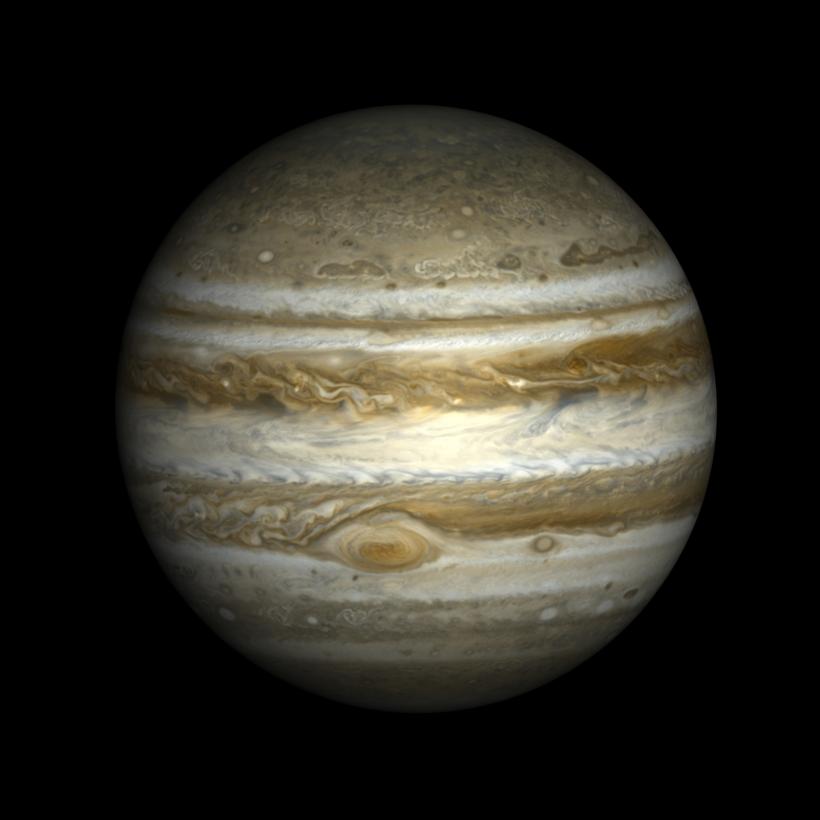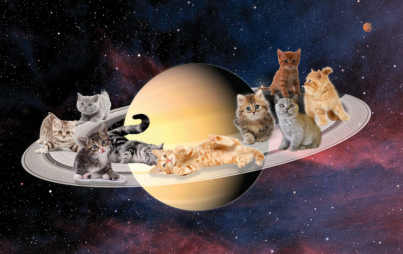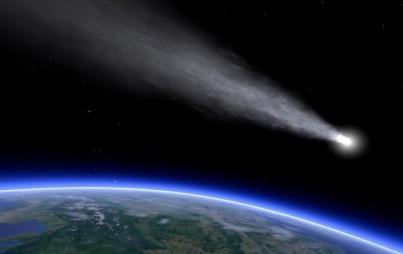
Jupiter is iconic (in case ya didn't know) for its towering size over all other planets in our solar system, as well as its Great Red Spot viewable even through a simple backyard telescope. Good 'ol NASA describes Jupiter's beauty mark as a “conspicuous deep red eye embedded in swirling layers of pale yellow, orange and white.”
Swirling is the operative word here, because the spot is actually a massive cyclonic vortex—or a “storm” as we laymen know it—that’s been raging for at least 400 years. And while it seems relatively small compared to the rest of the planet, the spot is actually three times the size of Earth.
Even so, the spot is much smaller than in the past, and seems to be exponentially decreasing in size in recent years, morphing from an oval to a circle before our very eyes. Is nothing sacred in the universe?
Regarding the storm’s impressive longevity thus far, researchers think that massive jet streams with hot and cold gases feed energy to swirling vortex. These jet streams also determine the Great Red Spot’s movement, which has lapped the planet at least 10 times since the early 19th century.
To take a little history tour with Jupiter, we begin with Italian astronomer Giovanni Cassini, who is believed to be the first to discern the spot way back in 1665. English scientist Robert Hooke discovered the then-oval around the same time.
The first reliable estimates of the Great Red Spot’s size came in the late 1800s, when scientists pegged it at around 25,000 miles wide. By 1979, space researchers measured the storm at a reduced 14,500 miles, and it was down by around 1,000 more miles in 1995 and 2009, respectively. Now, the spot check in at a relatively measly 10,250 miles, which translates to an annual reduction of about the distance between Washington, D.C. and Chicago. Jupiter just can’t keep its shit together.
So, what gives with the diminishing mighty storm? NASA relays that analysis of images from the Hubble Space Telescope indicate that small eddies are arising from the planet’s chaotic conditions, and have been feeding into the storm. The dynamics of these individual fluid swirls may be screwing up the Great Red Spot’s own precarious swirling balance.
Massive planet-wide jet streams from various directions, a huge spiraling red storm, and a plentitude of smaller vortexes along the way—Jupiter sounds like a hellish orb of monstrous forces if ever there was one. If only Dante had known more about the big red planet, he surely would have integrated it into his allegory of after-life miseries.
But every planet deserves a solid bit of branding, so for the sake of Jupiter’s marketing image, we hope it can hold onto its psychedelic red spot for at least as long as we humans desperately cling to life on earth.
Image: Thinkstock.






